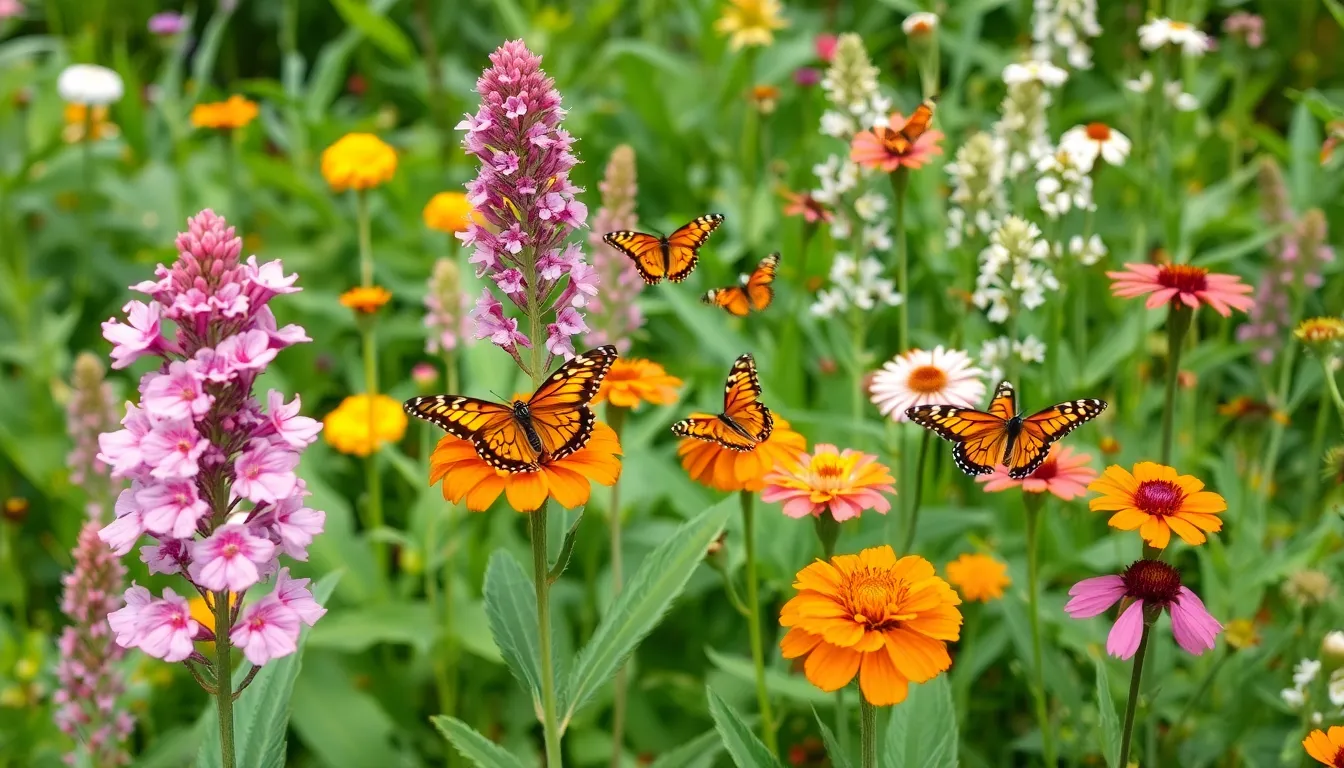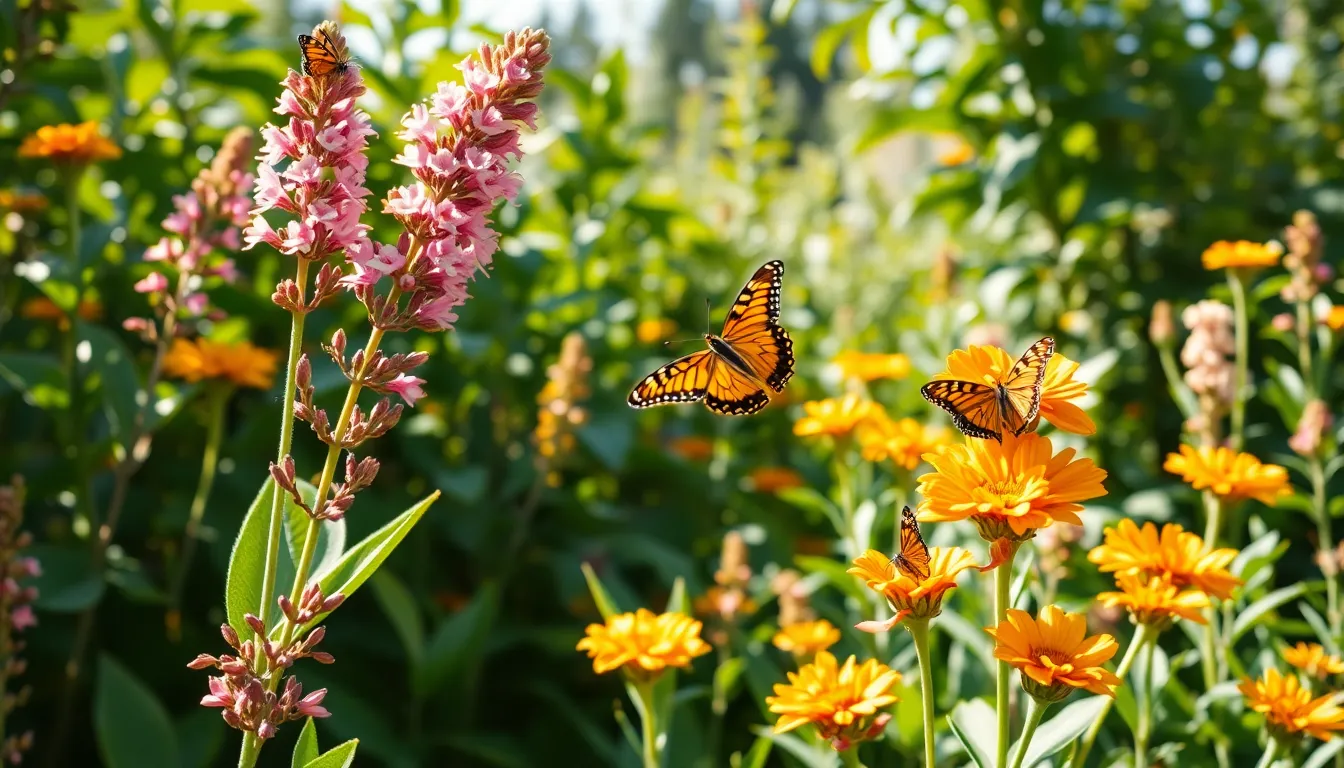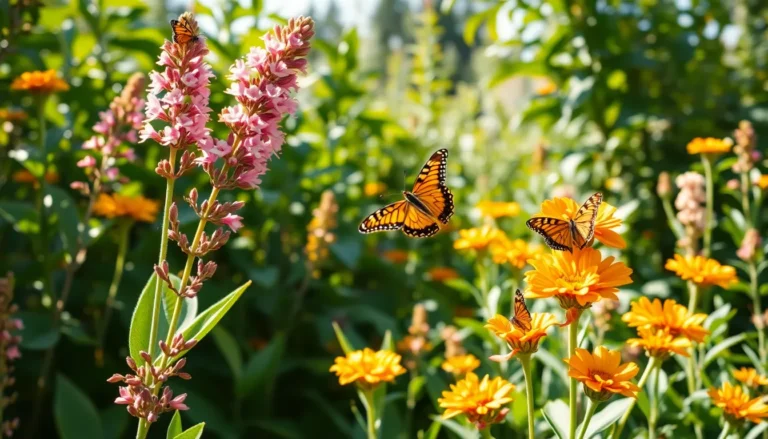Table of Contents
ToggleWhen it comes to attracting the beautiful hingagyi, choosing the right milkweed is like picking the perfect dance partner. Not all milkweed is created equal, and some varieties are downright irresistible to these delightful creatures. If you’re ready to roll out the red carpet for your fluttering friends, it’s time to dive into the world of milkweed and discover which types will make them swoon.
Understanding Hingagyi and Its Needs
Hingagyi thrive in environments that provide essential resources for feeding, breeding, and shelter. Selecting the right milkweed type is critical for attracting these creatures, as different varieties offer varying levels of nourishment and habitat. Milkweed serves as the primary food source for hingagyi caterpillars, so choosing species with high nutritional value can promote healthier growth.
Common milkweed varieties include Asclepias syriaca and Asclepias tuberosa. These types not only support caterpillar development but also draw adult hingagyi seeking nectar. The selection of milkweed must consider both native plants and regional adaptations to maximize attraction.
Ideal habitats often contain a mix of sunlight and partial shade. Leaf density influences how quickly hingagyi can access food and find protective cover. Therefore, creating varied environments with robust milkweed patches enhances the likelihood of hingagyi habitation.
Caring for milkweed requires regular monitoring for pests, as they can compromise plant health. Employing organic gardening practices often proves beneficial, ensuring a safe environment for hingagyi and other beneficial insects. Additionally, regular watering and drought resistance play pivotal roles in promoting optimal growth.
Prioritizing the right milkweed varieties is essential for attracting hingagyi. Understanding their basic needs, including food sources, habitat preferences, and environmental factors, supports successful engagement with these beautiful creatures. The careful selection of milkweed contributes significantly to creating an inviting space for hingagyi to thrive.
Exploring Different Types of Milkweed

Choosing the right milkweed type plays a crucial role in attracting hingagyi. Various options exist, each offering unique benefits for these butterflies.
Common Milkweed Varieties
Asclepias syriaca, or common milkweed, grows tall with clusters of pink flowers. This variety provides ample food for hingagyi caterpillars and attracts adult butterflies. Asclepias tuberosa, known as butterfly weed, features bright orange flowers that appeal to nectar-seeking adults. Both species thrive in sunny locations, making them ideal for gardens targeting these butterflies.
Native Milkweed Options
Native to specific regions, Asclepias incarnata, or swamp milkweed, flourishes in wetter soils and supports local hingagyi populations. Its pink blooms draw in nectar lovers. Additionally, Asclepias verticillata, called whorled milkweed, handles dry conditions well and produces clusters of white flowers. These native options help maintain local ecology while serving as a strong food source for caterpillars and adults alike.
Choosing the Right Milkweed for Hingagyi
Selecting the right milkweed species enhances the chances of attracting hingagyi butterflies. Various factors, such as climate and soil, play a critical role in ensuring these butterflies thrive.
Climate Considerations
Hingagyi butterflies flourish in warm climates. Temperatures between 70°F and 85°F provide optimal conditions for their activity and development. Zones 3 to 9 suit many milkweed varieties well, including Asclepias syriaca and Asclepias tuberosa. Each species exhibits varying resilience to temperature fluctuations and precipitation levels. A well-drained environment helps avoid root rot and other moisture-related issues. Adult hingagyi search for nectar more in sunny locations, ensuring milkweed grows in sunlight can increase their presence in gardens. Seasonal transitions also impact hingagyi preferences, as they require a reliable food source for both caterpillars and adults during their life cycles.
Soil Requirements
Soil plays a significant role in attracting hingagyi butterflies. Well-drained, loamy soil enhances milkweed growth and overall health. Suitable pH levels range between 6.0 and 7.5, catering to the diverse nutritional needs of various milkweed species. Native varieties like Asclepias incarnata thrive in moist soils, while Asclepias verticillata prefers dry conditions. Amending soil with organic matter improves fertility and water retention, promoting vibrant milkweed gardens. Regular checks for compacted soil ensure healthy root development and caterpillar growth. Successful milkweed cultivation directly supports hingagyi populations and contributes to local ecology.
Best Milkweed Species for Cultivating Hingagyi
Selecting the right milkweed species significantly impacts the success of attracting hingagyi butterflies. Certain varieties provide essential nutrition and shelter for their growth and development.
Asclepias Tuberosa
Asclepias tuberosa, commonly known as butterfly weed, features showy orange blooms. This milkweed thrives in full sun, making it perfect for gardens designed for hingagyi. Offering excellent nectar, it attracts adult butterflies seeking sustenance. Additionally, its deep taproot enhances drought resistance, ensuring this species flourishes in various conditions. Planting butterfly weed in well-drained soil promotes healthy growth and encourages caterpillars’ development. Regular maintenance of this milkweed variety helps create a vibrant habitat for hingagyi while supporting local ecology.
Asclepias Syriaca
Asclepias syriaca, also referred to as common milkweed, exhibits tall growth and clusters of pink flowers. This species grows well in sunny areas and adapts to diverse soil types. Known for its lush foliage, it provides ample food for hingagyi caterpillars. Nectar-rich flowers entice adult butterflies, creating a lively garden atmosphere. Regular monitoring for pests ensures the plants remain healthy and productive. Incorporating common milkweed in gardens supports hingagyi populations, making it a vital choice for any butterfly enthusiast.
Selecting the right milkweed is crucial for creating a welcoming environment for hingagyi butterflies. By understanding their needs and choosing species that provide essential resources, gardeners can significantly enhance their chances of attracting these stunning creatures.
Utilizing varieties like Asclepias tuberosa and Asclepias syriaca not only supports caterpillar growth but also draws in adult butterflies with their vibrant blooms.
Maintaining healthy plants through organic practices and regular monitoring ensures a thriving habitat. Embracing the right milkweed options contributes to the overall health of local ecosystems while delighting those who appreciate the beauty of hingagyi butterflies.







